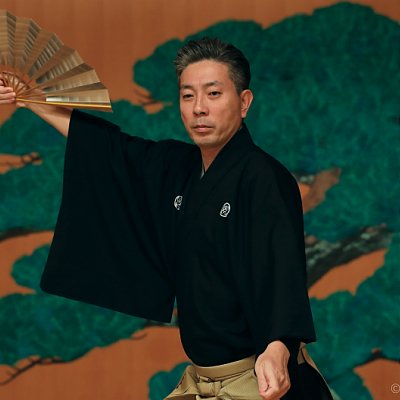Noh Theater
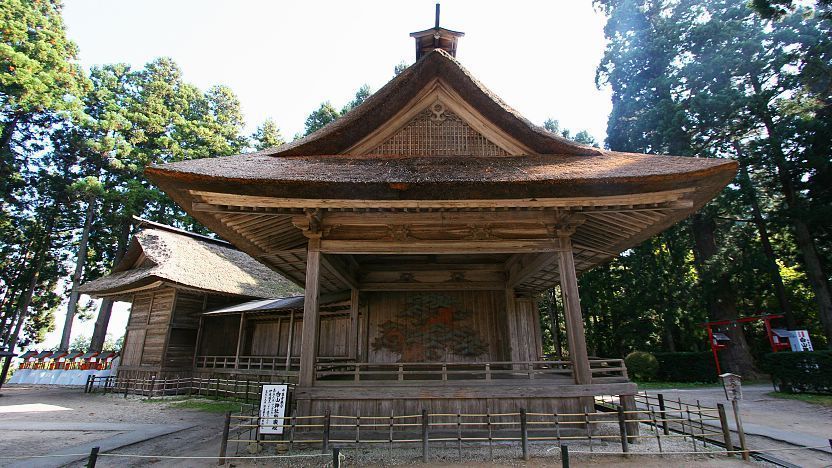
Noh (能, Nō) is a form of theater involving music, dance and drama, originating in the 14th century. It was developed together with kyogen, which are comical pieces performed during interludes of the main noh performance. The dual art of noh and kyogen is known as nogaku, and has been designated an Intangible Cultural Heritage by UNESCO.
Noh as we know it today was popularized and formalized by a man named Zeami during the Muromachi Period (1333-1573). It was Zeami's work that attracted the government's patronage of the art form. Zeami later fell out of favor with the government and was banished to Sado Island. Four main noh troupes were subsequently established, receiving sponsorship from shrines and temples.
During the Tokugawa Period (1603-1867), the shogunate made noh its official ceremonial art and issued regulations for its governance. Noh thus became increasingly standardized, with an emphasis on tradition rather than innovation. A fifth troupe was added during this time, making five main noh troupes which survive and perform till this day.
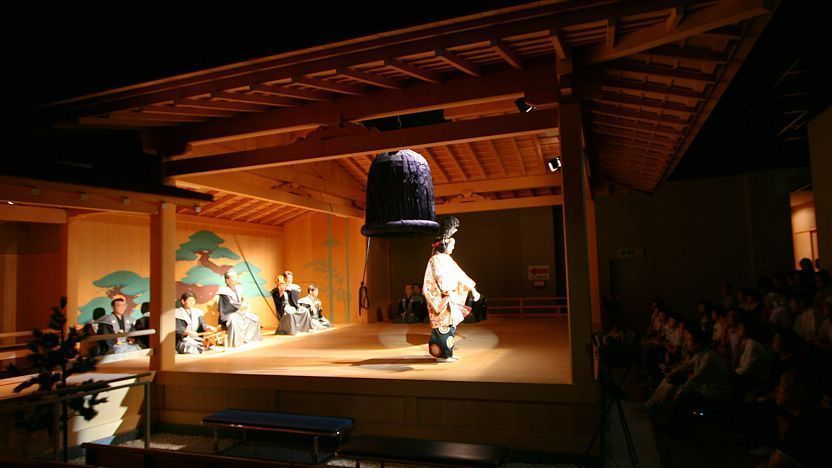
What is it?
Noh theater is structured around song and dance. Movement is slow, language is poetic, tone is monotonous, and costumes are rich and heavy. Plots are usually drawn from legend, history, literature and contemporary events. Themes often relate to dreams, supernatural worlds, ghosts and spirits.
Stage
Noh is performed on a square stage with a roof which is supported at its four corners by pillars. All sides of the stage are open except for the back side which consists of a wall with a painted image of a pine tree. A bridge runs at an oblique angle off the stage for performers to enter the stage. Noh used to be typically staged outdoors, but recently modern indoor theaters have also become a common venue.
Roles
All performers in noh are male.
- Shite - the leading character. Depending on the play, the shite may act as a holy old man, a deity, a demon, a spirit or a living man. His movements express various moods.
- Waki - the supporting actor. The waki plays roles such as a priest, monk or samurai. In contrast to the shite, the waki always portrays living people.
- Hayashi - the musicians. Four musicians provide accompaniment for the performance with a flute (fue), shoulder drum (kotsuzumi), hip drum (otsuzumi) and stick drum (taiko).
- Jiutai - the chorus. The chorus sits to the left of the stage and assists the shite in the narration of the story.
- Koken - stage attendants. Dressed in black, the stage attendants are not part of the play but assist the performers in various ways, such as handing them props.
Masks
One key element of noh are the masks which the shite wears. They tell the audience what kind of character is being portrayed. Frequently used masks represent demons and spirits, as well as women and men of various ages. The masks are carved from blocks of Japanese cypress. Their three dimensional properties allow skilled actors to induce a variety of expressions with changes in head orientation.
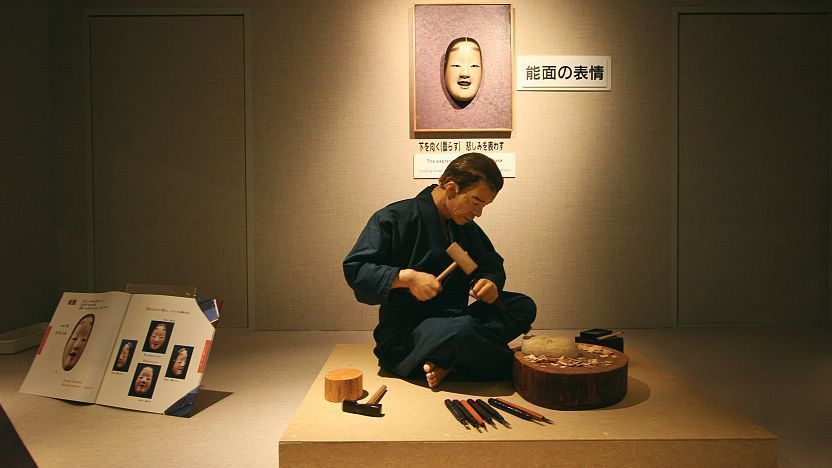
Costumes and props
Costumes consist of multiple layers and textures that create an effect of resplendent elegance but also a bulky, massive figure. Expressiveness is enhanced by props, most notably a folding fan. Closed, partly closed or open, the fan may represent any object as suggested by its shape and handling, for example a dagger or a lantern.
Kyogen
Kyogen are the comic pieces performed at intervals between the main noh performance. They utilize satire and witty jokes and are often performed with rhythmical language and sometimes exaggerated actions to inspire laughter from the audience. Most kyogen pieces last for about 15-20 minutes and involve two or three actors. Plots are usually about stories of everyday life, such as men expressing their desire to find wives or farmers praying for good fortune.
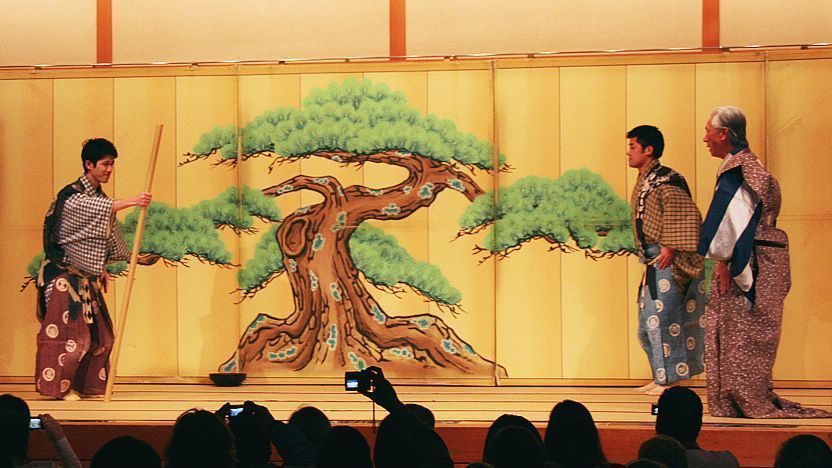
Where to watch noh?
Some of the easiest places to watch noh today are modern indoor theaters with an in-built noh stage. In Tokyo, such venues include the National Noh Theatre near Sendagaya Station, the Kanze Noh Theater in Ginza and the Cerulean Tower Noh Theatre in Shibuya. In Osaka, there is the Otsuki Noh Theatre, while Nagoya has the Nagoya Noh Theatre, next to Nagoya Castle.
These days, a typical noh program lasts a couple of hours and consists of two or three noh acts with short kyogen pieces in between. Tickets range from 3,000 up to 12,500 yen, and can be bought over the counter or over the internet. Some places offer discounted tickets to watch a single act of a noh performance, which may be ideal for those looking for a short introduction to the Japanese artform. Note that ticket purchases often require Japanese language skills.
As mentioned before, shrines, temples and the nobility were some of the first patrons of the noh theater. Accordingly, at some famous shrines and temples beautiful outdoor noh stages still exist today. They hold occasional performances, but tickets may be difficult to obtain. Miyajima's Itsukushima Shrine (where the stage stands on pillars in the sea), Hiraizumi's Chusonji Temple, Kyoto's Fushimi Inari Shrine and Tokyo's Yasukuni Shrine are some places where such outdoor stages can be found.
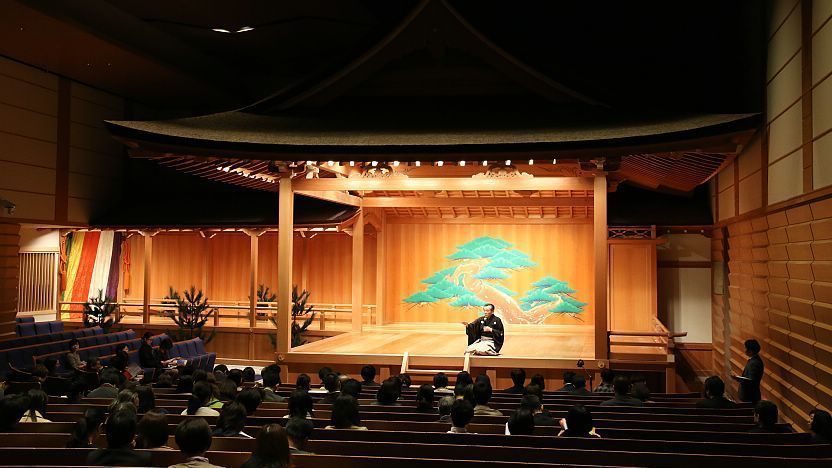
Questions? Ask in our forum.
Links and Resources
English
Experiences
-
-
![]() SponsoredDiscover Noh at Shibuya’s Noh Theater With Backstage Tour and Private PracticeExperience Kyogen, a traditional Japanese art form and dialogue-based drama rooted in everyday events with about 700 years of history, at the Cerulean Tower Noh Theater in Shibuya, Tokyo.View experienceSponsored
SponsoredDiscover Noh at Shibuya’s Noh Theater With Backstage Tour and Private PracticeExperience Kyogen, a traditional Japanese art form and dialogue-based drama rooted in everyday events with about 700 years of history, at the Cerulean Tower Noh Theater in Shibuya, Tokyo.View experienceSponsored
-
